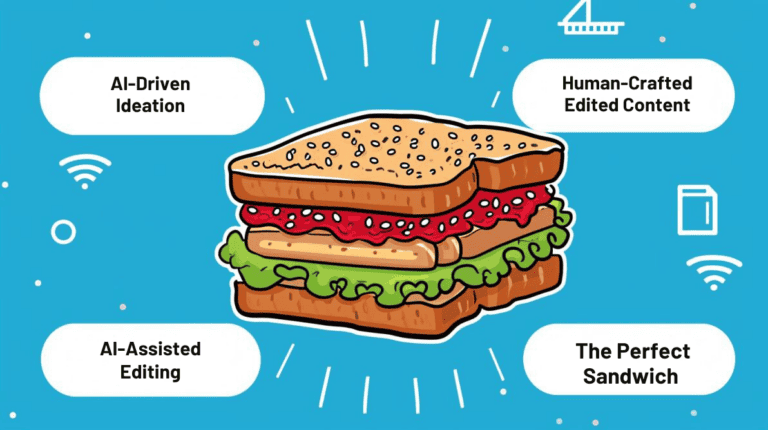The Hidden Cost of Ignoring AI in Your Small Business
Introduction: The Silent Drain on Your Business
Running a small business is a marathon, not a sprint. Every minute and dollar counts, yet many entrepreneurs cling to outdated manual processes, mistakenly believing that AI is a luxury only for big corporations. The cost of ignoring ai is more than just missed opportunities—it’s a drain on productivity, innovation, and overall growth. Embracing modern, affordable AI tools can transform your business by streamlining operations and sharpening your competitive edge.
From productivity leaks to employee burnout, the hidden costs of ignoring AI add up quickly. Let’s break down how manual workflows are sabotaging your growth—and how affordable, accessible AI tools can turn the tide.
1. The Productivity Drain: Time Is Money (And You’re Losing Both)
Manual processes are slow, error-prone, and exhausting. Consider:
- Hours lost on repetitive tasks: Employees spend 4-5 hours weekly on administrative work like data entry, invoicing, and inventory tracking. For a 10-person team, that’s 200+ hours/month wasted.
- Human error costs: Manual data entry has a 1-3% error rate. One misplaced decimal in a supplier invoice or client order could cost thousands.
- Decision-making delays: Without AI-driven analytics, you’re relying on gut feelings instead of real-time insights. Slow reactions to market shifts mean missed opportunities.
Real-World Example:
A local HVAC company manually scheduled appointments and tracked parts inventory. Disorganized processes led to double-bookings, stockouts, and 20% longer job completion times. After implementing AI scheduling and inventory tools, they reduced administrative work by 35% and boosted monthly revenue by 18%.
2. Missed Sales Opportunities: The Greatest Cost of Ignoring AI
Customers expect fast, personalized service—something manual systems struggle to deliver.
- Inefficient marketing: Generic email blasts or social posts waste resources. AI tools analyze customer behavior to create hyper-targeted campaigns, boosting conversions.
- Poor customer experience: Slow response times? 53% of customers abandon a business if they can’t get quick answers. AI chatbots solve 80% of routine queries instantly.
- Inventory mismanagement: Stockouts or overstocking cost U.S. retailers $1.1 trillion annually. AI predicts demand to keep shelves (real or digital) optimized.
Hypothetical Case Study:
GreenSprout Cafe relied on guesswork to order ingredients. Frequent stockouts of popular items led to lost sales and negative reviews. After adopting AI-driven demand forecasting, they reduced waste by 40% and increased customer satisfaction scores by 30%.
3. Employee Burnout: The Hidden Talent Killer
Tedious work doesn’t just waste time—it demoralizes your team.
- Repetitive tasks breed dissatisfaction: 58% of employees say mundane work harms their motivation.
- High turnover costs: Replacing an employee costs 1.5x their salary. Burnout from manual workflows accelerates attrition.
- Stifled creativity: When your team is buried in spreadsheets, they can’t focus on strategic growth or innovation.
The Fix:
AI automates the grind. For example, accounting software like QuickBooks AI automates expense tracking, while tools like Grammarly streamline content creation. Employees regain time for high-value tasks, boosting job satisfaction and retention.
4. Long-Term Consequences: Falling Behind the Competition
While you’re stuck in the manual era, competitors leveraging AI are:
- Scaling faster: Automating workflows means handling higher volumes without proportional staffing increases.
- Building customer loyalty: AI personalization (e.g., tailored product recommendations) keeps buyers coming back.
- Adapting to trends: Predictive analytics spot market shifts early, letting agile businesses pivot while others play catch-up.
The Reality Check:
91% of small and medium businesses (SMBs) with AI reported that it boosts their revenue. Meanwhile, those avoiding it risk becoming obsolete.
5. AI Is More Accessible Than You Think
The myth that AI is “too expensive” or “too complex” is outdated. Modern solutions include:
- No-code platforms: Tools like Zapier automate workflows without coding.
- Freemium models: Start free with platforms like Canva (AI design) or HubSpot (marketing automation).
- Industry-specific tools: From Square for retail to Jobber for service businesses, tailored AI fits your niche.
Cost Comparison:
- Manual Processes: Hidden costs (errors, wasted time, turnover) = ~$50k/year for a 10-person team.
- AI Implementation: Basic tools start at $20–$100/month. The ROI is undeniable.
Conclusion: Stop Paying the Price of Inaction
The “cost of not using AI for small business” isn’t just financial—it’s strategic. Every day without AI means lost productivity, weaker customer relationships, and a team stretched too thin.
The good news? You don’t need a tech guru or a Fortune 500 budget to start. Affordable, user-friendly AI tools can automate your biggest pain points in days—not months.
Ready to Eliminate Hidden Costs?
At Digismart, we help small businesses like yours implement AI without the overwhelm. Book a free consultation to discover which tools will deliver the fastest ROI for your unique needs.
Internal Links:






